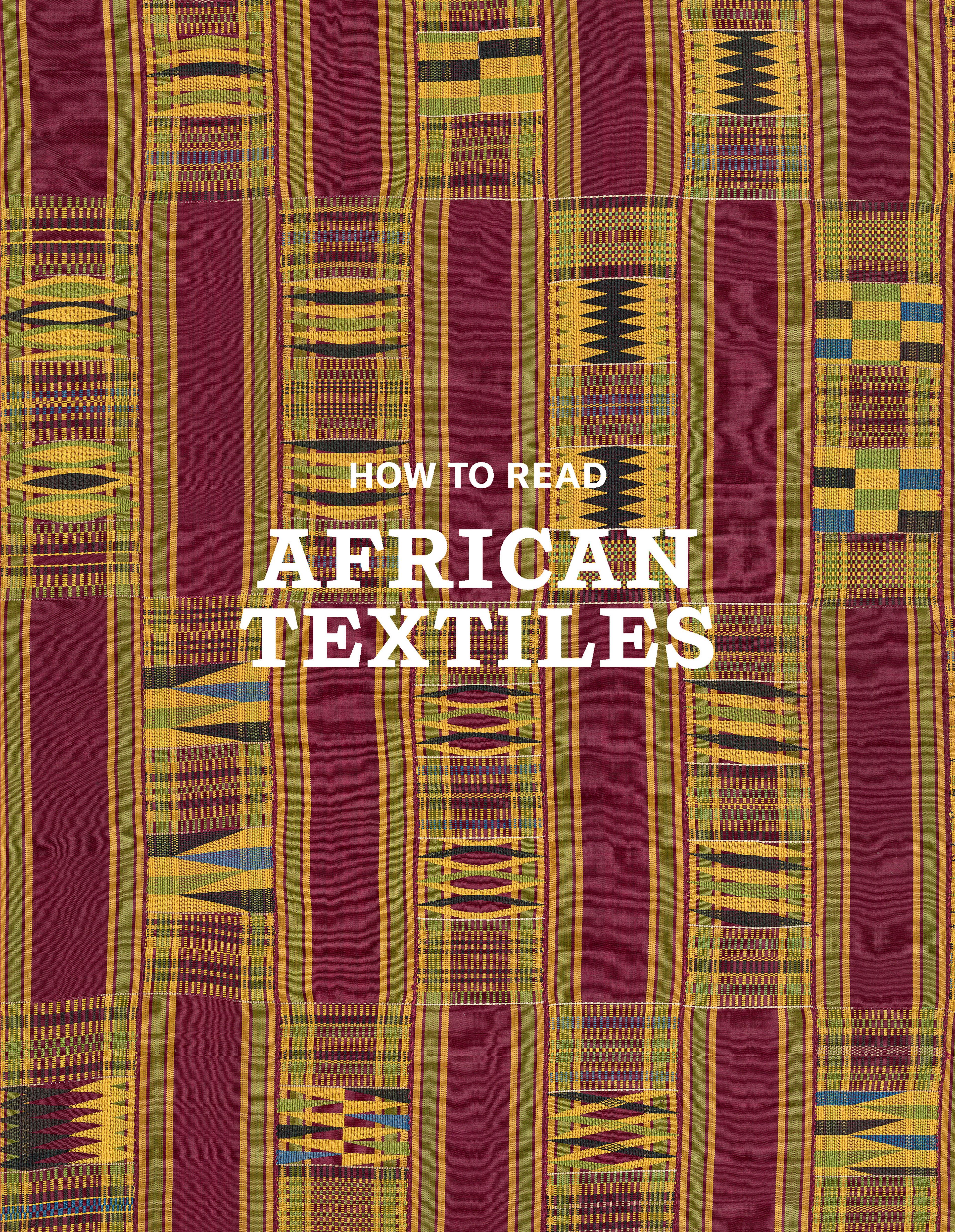Elégẹ̀gẹ̀ pupa (woman’s prestige wrapper with red band)
During the mid-twentieth century, there were only a few male weavers in the Nigerian town of Owo. One of them, Obamadesara, has been credited with the creation of a genre of prestige over-wrapper known as Elegheghe, worn by women in Owo royal households. This master weaver was a Yoruba prince native of Owo. He is recognized for his innovative style of weaving which he presumably developed while travelling across Nigeria during a period of exile imposed by the colonial authorities. According to oral accounts, he produced his rather small corpus of some fifteen textiles between the time of his return to Owo in 1930 and his death in 1956.
Distinctive is the creation of motifs using a tapestry weave technique -- a technique most unusual in this region of West Africa. In this tapestry weave example, each band features a lizard motif at one end and an interlaced rectangle at the other. Obamadesara's daughter suggested that because of its intricacy, he was not able to teach the design to any apprentice. No longer produced, Elegheghe became prestigious heirlooms.
A photograph published in Robin Poynor's 1980 article on Owo cloths illustrates how such Elegheghe were worn. Positioned as outer-wrappers over the waist, atop a blue and white striped wrapper, it is adjusted so that the lizard patterns can be seen at front. Poynor further distinguished two styles of Elegheghe: one with a dyed red band, known as Elegheghe pupa, and the other with a dark band, known as Elegheghe dudu. This example visibly belongs to the first category.
Distinctive is the creation of motifs using a tapestry weave technique -- a technique most unusual in this region of West Africa. In this tapestry weave example, each band features a lizard motif at one end and an interlaced rectangle at the other. Obamadesara's daughter suggested that because of its intricacy, he was not able to teach the design to any apprentice. No longer produced, Elegheghe became prestigious heirlooms.
A photograph published in Robin Poynor's 1980 article on Owo cloths illustrates how such Elegheghe were worn. Positioned as outer-wrappers over the waist, atop a blue and white striped wrapper, it is adjusted so that the lizard patterns can be seen at front. Poynor further distinguished two styles of Elegheghe: one with a dyed red band, known as Elegheghe pupa, and the other with a dark band, known as Elegheghe dudu. This example visibly belongs to the first category.
Artwork Details
- Title: Elégẹ̀gẹ̀ pupa (woman’s prestige wrapper with red band)
- Artist: Obamadesara (Nigerian, died 1956, Owo)
- Date: early 20th century
- Geography: Nigeria, Owo
- Culture: Yoruba peoples
- Medium: Cotton (both hand- and machine-spun), silk, dye
- Dimensions: H. 65 × W. 34 in. (165.1 × 86.4 cm)
- Classification: Textiles-Costumes
- Credit Line: Gift of Samuel and Gabrielle Lurie, in celebration of the Museum's 150th Anniversary, 2018
- Object Number: 2018.925.5
- Curatorial Department: The Michael C. Rockefeller Wing
More Artwork
Research Resources
The Met provides unparalleled resources for research and welcomes an international community of students and scholars. The Met's Open Access API is where creators and researchers can connect to the The Met collection. Open Access data and public domain images are available for unrestricted commercial and noncommercial use without permission or fee.
To request images under copyright and other restrictions, please use this Image Request form.
Feedback
We continue to research and examine historical and cultural context for objects in The Met collection. If you have comments or questions about this object record, please contact us using the form below. The Museum looks forward to receiving your comments.
